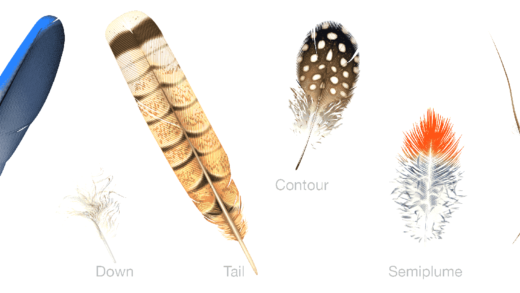American Red Squirrels are small but mighty creatures known for their territorial behavior, aggressive displays, and unique communication skills. Their diet consists mainly of seeds and nuts, impacting their interactions with other species. Seasonal changes significantly influence their behavior, from caching food in fall to conserving energy in winter.
Size Matters: Understanding the American Red Squirrel’s Size
The American Red Squirrel is a small yet fascinating creature. Typically, they measure between 8 to 10 inches in length, with a bushy tail that adds another 7 to 10 inches. Their compact size allows them to navigate through trees with agility, making them expert climbers. In terms of weight, an adult American Red Squirrel usually weighs around 5 to 10 ounces. This diminutive size is not just for show; it plays a crucial role in their behavior and survival.
The small size of the American Red Squirrel influences many aspects of its life. For instance, their lightweight bodies enable them to leap between branches with ease, which is vital for escaping predators. Additionally, their size allows them to access food sources in locations that larger animals cannot reach. This adaptability is a key factor in their survival.
Territorial Behavior: Why American Red Squirrels Claim Their Space
American Red Squirrels are known for their highly territorial behavior. They establish and defend territories that can range from 1 to 3 acres, depending on the abundance of food and shelter. This territoriality is crucial for their survival as it ensures access to resources like food and nesting sites.
These squirrels use vocalizations and physical displays to assert dominance over their territory. For example, they may engage in loud chattering or flick their tails aggressively to warn intruders. This behavior not only deters potential threats but also helps maintain a stable social structure among local populations.
Understanding their territorial nature can help in appreciating their role in the ecosystem. By claiming specific areas, they also contribute to seed dispersal and forest regeneration, which benefits the environment.
Aggressive Displays: How Red Squirrels Show Their Fierce Side
Despite their small size, American Red Squirrels are fierce and unyielding when it comes to defending their territory. They exhibit a range of aggressive displays that can surprise onlookers. For instance, they may stand upright, fluff their fur, and emit high-pitched warning calls when they feel threatened.
These aggressive behaviors serve multiple purposes. They not only intimidate potential rivals but also signal to other animals that the area is occupied. This is particularly important during mating season when competition for resources intensifies.
Interestingly, aggression in Red Squirrels is not solely linked to territory. They may also display aggression towards other species, such as larger birds or animals that pose a threat to their nests. Understanding these behaviors highlights the complex social interactions that define their lives.
Small but Mighty: The Role of Size in Their Attitude
The small size of the American Red Squirrel significantly influences their behavior. These squirrels, measuring around 8 to 10 inches, embody a big attitude in a tiny package. Their size allows them to be agile and nimble, essential traits for navigating the forest canopy. This agility helps them evade predators and swiftly access food sources, which is crucial for survival.
Moreover, their small stature contributes to their boldness. They often exhibit assertive behaviors, challenging larger animals to protect their territory. For instance, despite being smaller than many potential rivals, they are known to chase away animals much larger than themselves. This courageousness is a defining characteristic of their personality.
In essence, their small size does not hinder their tenacity. Instead, it shapes their survival strategies, allowing them to thrive in various environments. This fascinating interplay between size and behavior highlights the adaptability of the American Red Squirrel.
Communication Skills: How Red Squirrels Talk to Each Other
American Red Squirrels possess a rich repertoire of communication skills. They utilize a variety of vocalizations and body language to convey messages to one another. The primary vocalizations include warning calls, chatter, and even a unique sound often described as a “squeak.” These sounds help them alert others to potential dangers or intruders in their territory.
Additionally, their body language plays a crucial role in communication. For instance, when they feel threatened, they may fluff up their fur and adopt a defensive posture. This display not only signals aggression but also serves to intimidate potential threats. Their tail movements are equally expressive, with rapid flicks indicating agitation or alarm.
Through these methods, Red Squirrels maintain complex social interactions. They establish hierarchies and boundaries within their territories, which helps minimize conflicts. Understanding their communication techniques provides valuable insight into their social structures and behaviors.
Dining Habits: What Red Squirrels Eat and Its Impact on Behavior
The diet of American Red Squirrels primarily consists of seeds, nuts, and fruits. Their eating habits are closely tied to their behavior and survival strategies. For example, they are known for their caching behavior, where they store food for later consumption. This practice not only ensures a steady food supply but also influences their territorial behavior, as they protect their food caches fiercely.
Their dietary preferences also shape their interactions with the environment. During different seasons, they adapt their foraging techniques based on food availability. In spring, they may rely more on tender buds and young shoots, while in fall, nuts and seeds become their primary focus. This adaptability is vital for their survival.
Interestingly, their diet can also affect their social dynamics. Competition for food resources often leads to aggressive displays toward intruders. By understanding their dietary habits, one can appreciate the intricate relationship between food availability, behavior, and social structure among American Red Squirrels.
Fun Facts: Unique Habits and Lifestyle of Red Squirrels
American Red Squirrels exhibit a variety of unique habits that make them stand out in the animal kingdom. One interesting fact is their remarkable memory. These squirrels can remember the locations of their buried food caches for several months, which is essential for their survival during winter months. Additionally, they engage in a behavior known as “scatter hoarding,” where they bury food in multiple locations rather than in one central place. This not only increases their chances of finding food later but also helps in seed dispersal, contributing to forest regeneration.
Another intriguing aspect of their lifestyle is their playful nature. Red Squirrels are often seen chasing each other in playful antics, which is crucial for their social development. They also have a habit of chewing on tree bark, which helps them sharpen their teeth and extract nutrients from the trees. This behavior is not just for fun; it plays a vital role in maintaining their dental health.
In terms of nesting, Red Squirrels prefer to build their nests high up in trees, often using materials like leaves, moss, and twigs. Their nests, or dreys, provide insulation and safety from predators. Overall, these unique habits contribute to their adaptability and success in various environments.
Interactions: How Red Squirrels Relate to Other Animals
American Red Squirrels interact with various species in their habitat, showcasing a complex web of relationships. They are known to be quite aggressive towards other squirrels and animals that encroach on their territory. For instance, they often confront larger animals, such as foxes or hawks, when defending their nests. This behavior underscores their bold and fearless nature.
Interestingly, Red Squirrels also have symbiotic relationships with certain bird species. They may share nesting spaces with birds like chickadees, allowing both species to benefit from the protection provided by their presence. Additionally, the seeds and nuts they leave behind while foraging attract other animals, creating a diverse ecosystem around their feeding grounds.
Moreover, their interactions with humans can vary. In urban areas, Red Squirrels may scavenge for food near human habitats, often becoming a common sight in parks and gardens. This adaptability to human presence is a testament to their resourcefulness.
The Impact of Seasons: How Seasonal Changes Affect Their Behavior
Seasonal changes play a significant role in shaping the behavior of American Red Squirrels. In spring, as food becomes abundant, they engage in more social interactions and mating rituals. This is the time when their territorial behavior peaks as they compete for resources and mates. They become highly active, foraging for fresh buds and young shoots, which are essential for their diet during this period.
As summer approaches, their focus shifts towards caching food for the winter months. They become more secretive about their food storage, often burying nuts and seeds in hidden locations. This preparation is crucial for their survival during the harsh winter when food is scarce.
In fall, Red Squirrels exhibit frantic activity as they gather and store food. They may be seen darting around, busily collecting supplies to ensure they have enough to last through winter. During winter, their activity levels decrease significantly. They rely on their food caches and spend more time in their nests, conserving energy until the warmer months return.





Comments are closed.